
H-K 1/32 Do-335B-2 Zerstorer
| KIT #: | 01E07 |
| PRICE: | $163 - 200 depending on where you get it |
| DECALS: | Two options |
| REVIEWER: | Tom Cleaver |
| NOTES: | New tool kit (2014) |

| HISTORY |
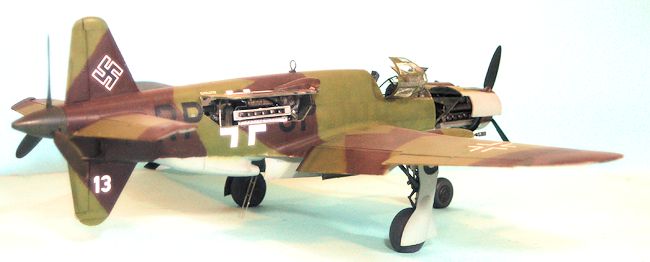 The
Technische Amt issued a requirement in 1942 for a single seat unarmed intruder
capable of carrying a 1,100 lb. bomb load at 495 mph.
Arado, Dornier and Junkers submitted responses; the Dornier Projekt 231,
employing centerline thrust, was the winning contender.
The
Technische Amt issued a requirement in 1942 for a single seat unarmed intruder
capable of carrying a 1,100 lb. bomb load at 495 mph.
Arado, Dornier and Junkers submitted responses; the Dornier Projekt 231,
employing centerline thrust, was the winning contender.
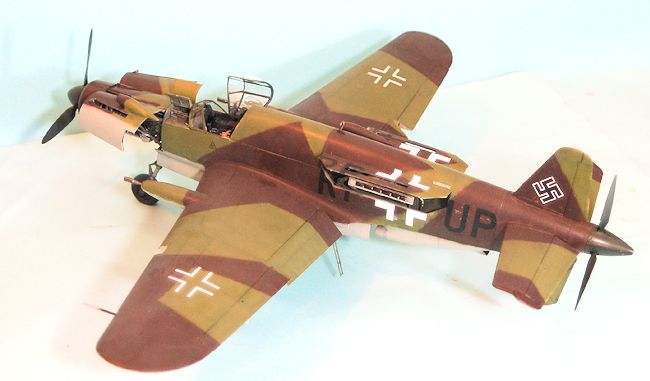 The
Do-335 V13 and V14 had the two 15mm cannon in the nose of the A-series replaced
by two MG 151 20mm weapons, supplemented by two 30mm MK 103 cannons in fairings
ahead of the wing leading edge, just inboard of the main gear; this was to
become the Do-335B-2, which would have been the main early production version of
the series.
Though six other
B-series prototypes were under construction when further development was
terminated by capture of the Oberpfaffenhofen facility by the U.S. Army in late
March, 1945, the V13 and V14 were the only examples of the B-series to ever fly,
demonstrating a top speed of 474 mph.
Following the end of the war, the Do-335 V14 was handed over to the
French, and extensively tested between August 1945 and the spring of 1947.
The
Do-335 V13 and V14 had the two 15mm cannon in the nose of the A-series replaced
by two MG 151 20mm weapons, supplemented by two 30mm MK 103 cannons in fairings
ahead of the wing leading edge, just inboard of the main gear; this was to
become the Do-335B-2, which would have been the main early production version of
the series.
Though six other
B-series prototypes were under construction when further development was
terminated by capture of the Oberpfaffenhofen facility by the U.S. Army in late
March, 1945, the V13 and V14 were the only examples of the B-series to ever fly,
demonstrating a top speed of 474 mph.
Following the end of the war, the Do-335 V14 was handed over to the
French, and extensively tested between August 1945 and the spring of 1947.
| THE KIT |
The Do-335 has previously been modeled in 1/72 scale by Dragon
(as
well as Revell, Lindberg and possibly Frog, with the most recent kit being done
by Hobby Boss. Ed), and in 1/48 scale by Monogram and Tamiya.
Only Tamiya produced a Do-335B-2.
This Do-335B-2 from H-K Models is the first kit in
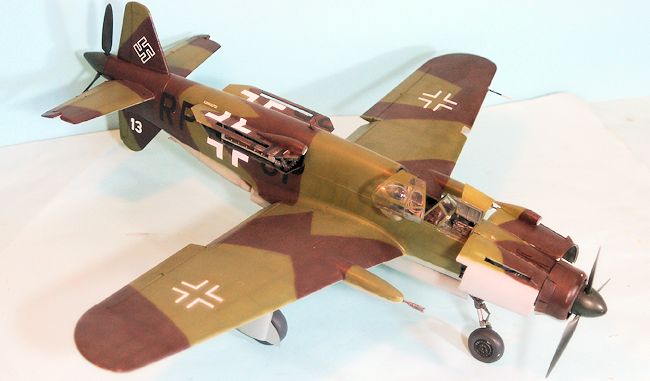 1/32, and is to be
followed by a Do-335A fighter-bomber, Do-336A-12 two seat trainer, and Do-335B-6
night fighter.
The kit allows one
to make either the Do-335B-1 (V13) with the standard wing or the Do335B-2 (V14)
with the extended wing span.
1/32, and is to be
followed by a Do-335A fighter-bomber, Do-336A-12 two seat trainer, and Do-335B-6
night fighter.
The kit allows one
to make either the Do-335B-1 (V13) with the standard wing or the Do335B-2 (V14)
with the extended wing span.
| CONSTRUCTION |
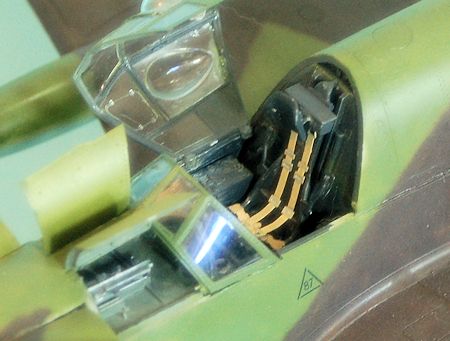 This kit is complex but not complicated, if one follows the instructions.
This is not a choice for the modeler as is the case with other kits.
The parts design is very precise, and if assembly is not carried out in
the order shown in the instruction, many parts will not fit and the kit cannot
be completed.
You have been warned.
This isn't just their idea among many others, presented as a suggestion.
This kit is complex but not complicated, if one follows the instructions.
This is not a choice for the modeler as is the case with other kits.
The parts design is very precise, and if assembly is not carried out in
the order shown in the instruction, many parts will not fit and the kit cannot
be completed.
You have been warned.
This isn't just their idea among many others, presented as a suggestion.

| COLORS & MARKINGS |
The prototypes were painted RLM 81 Braunviolett and RLM 82
Lichtgrun, with RLM 76 Lichtblau lower surfaces.
I used Xtracrylix for this.
The propellers were painted RLM 70 Schwartzgrun.
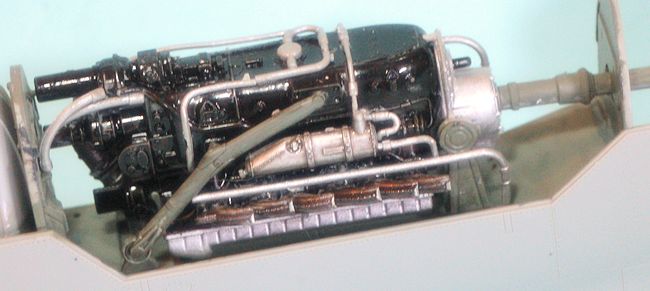
| CONCLUSIONS |
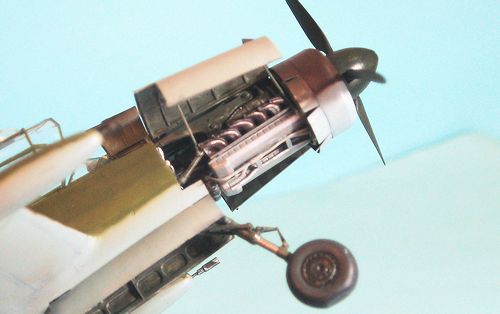 This is an extremely well-designed kit, and displays what is now possible
in production.
Successful assembly
requires that a modeler be much more precise in their work than is the case with
other models, but the result is excellent.
Luftwaffe fans could have fun coming up with "what if" markings for the
model.
The kit is appropriate for
modelers who have learned to take their time with their work, and who have
discovered the value of committing the radical act of actually following the
instructions.
This is an extremely well-designed kit, and displays what is now possible
in production.
Successful assembly
requires that a modeler be much more precise in their work than is the case with
other models, but the result is excellent.
Luftwaffe fans could have fun coming up with "what if" markings for the
model.
The kit is appropriate for
modelers who have learned to take their time with their work, and who have
discovered the value of committing the radical act of actually following the
instructions.
Thanks to Neil Yan at H-K Models for the review copy.
Tom Cleaver
December 2014
Thanks to If you would like your product reviewed fairly and fairly quickly, please contact the editor or see other details in the Note to Contributors.